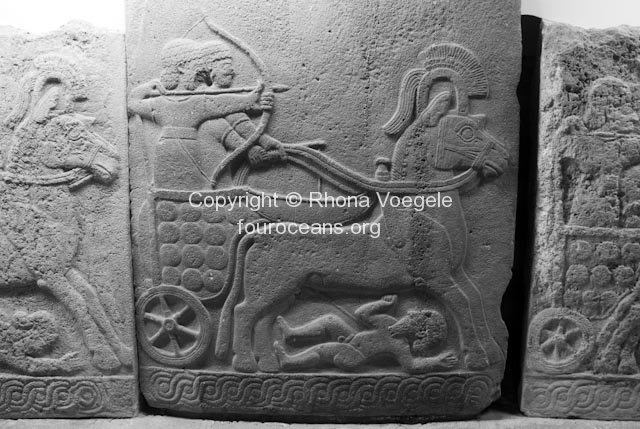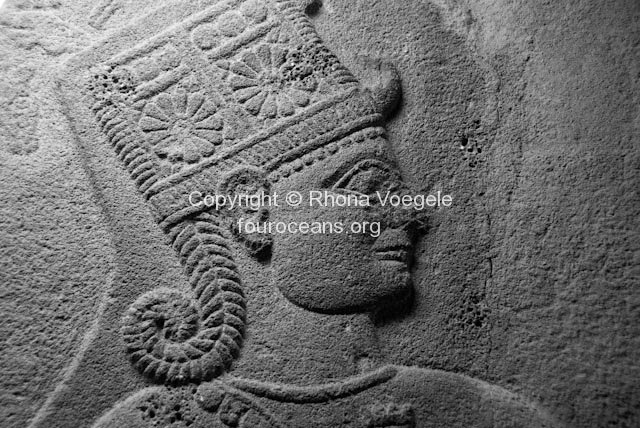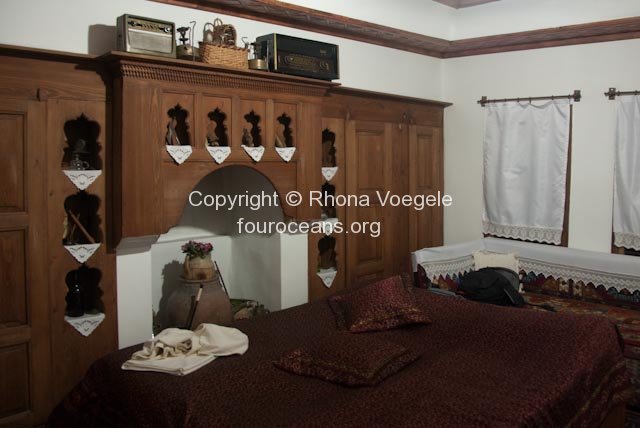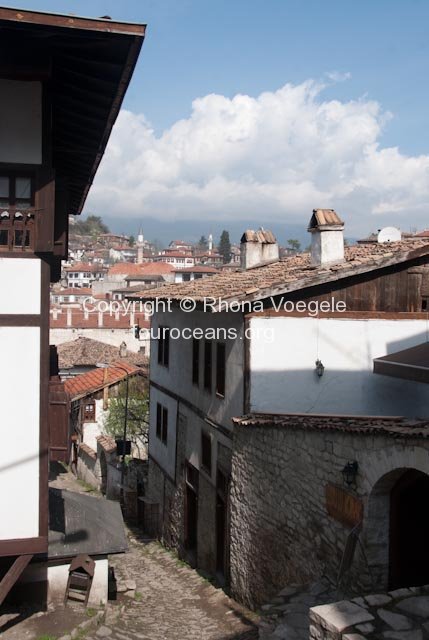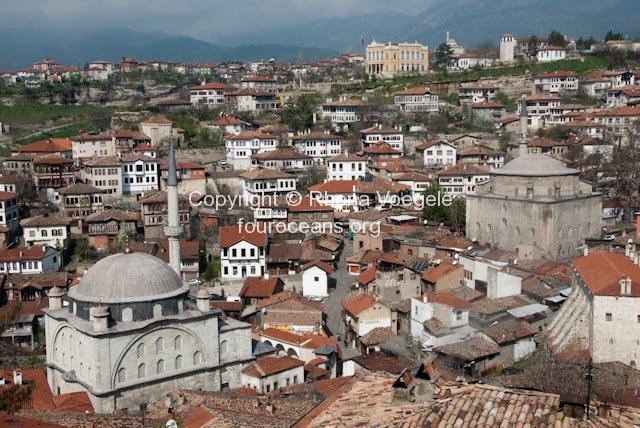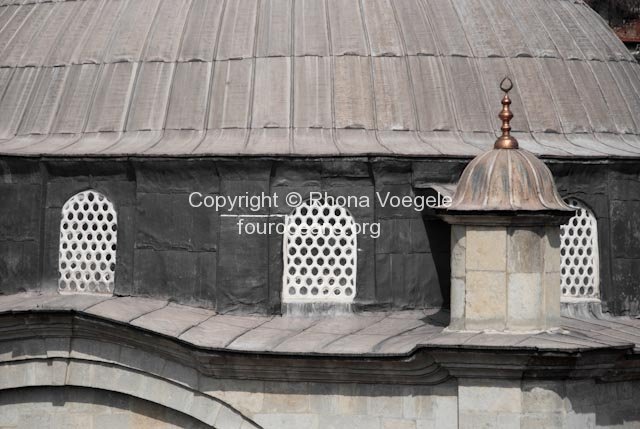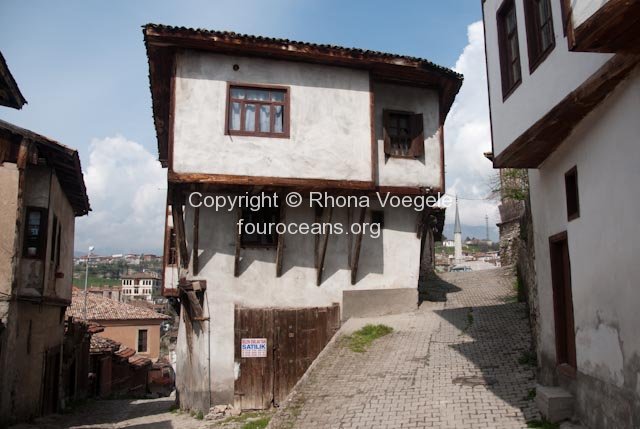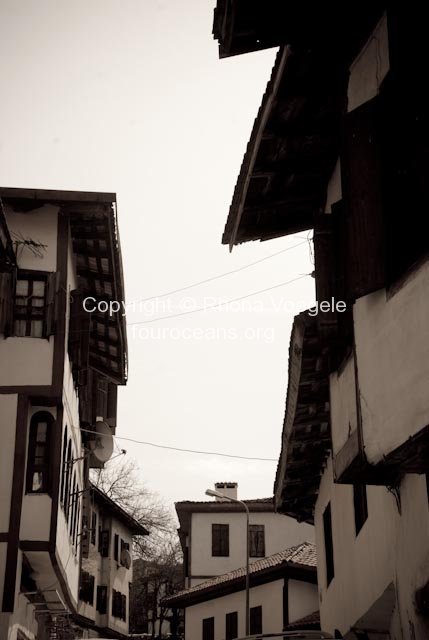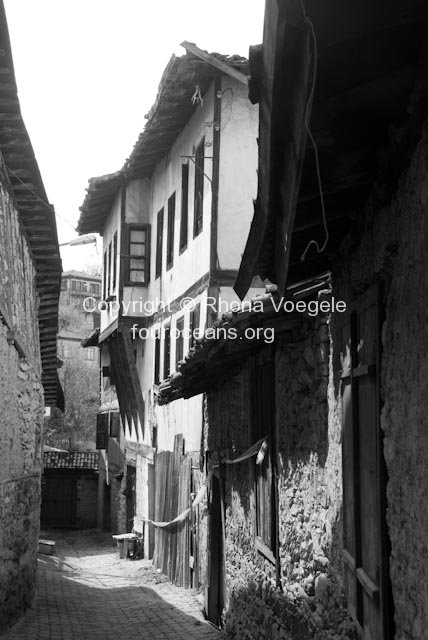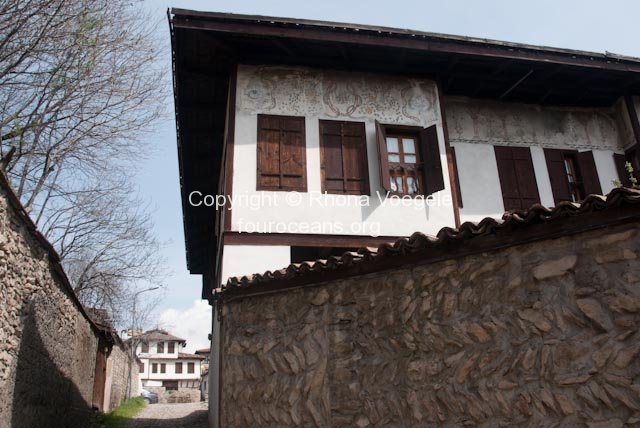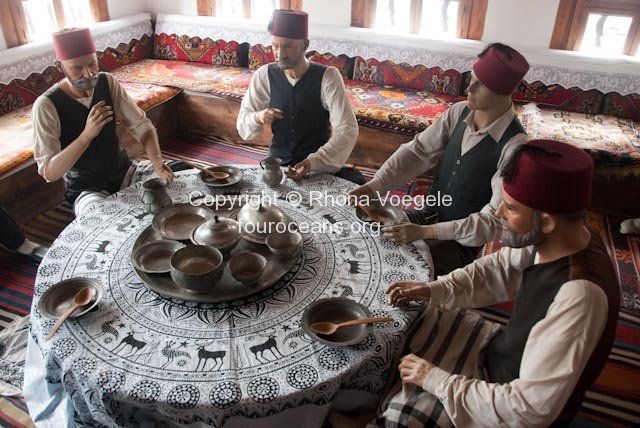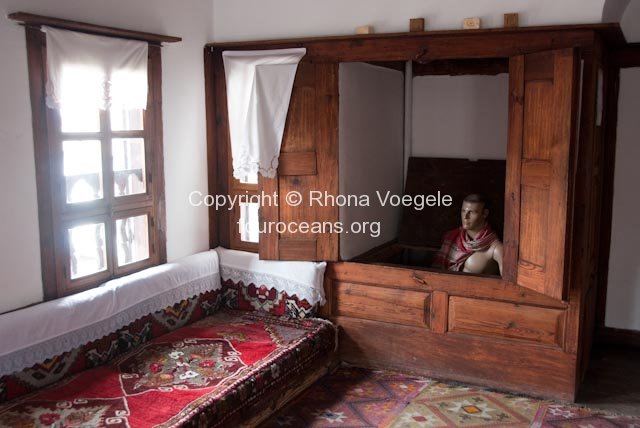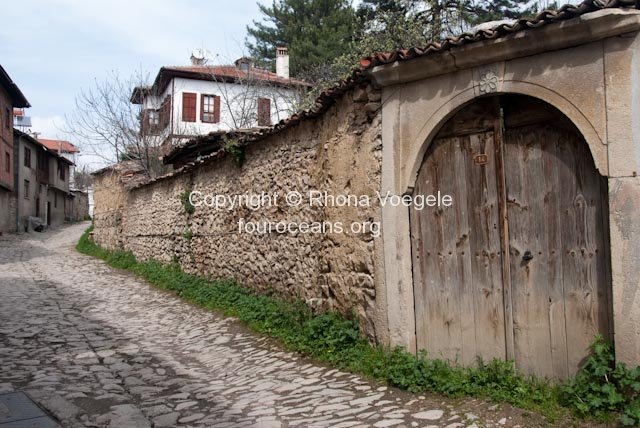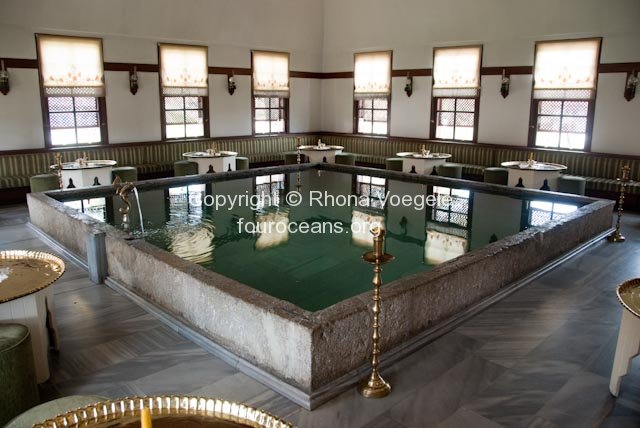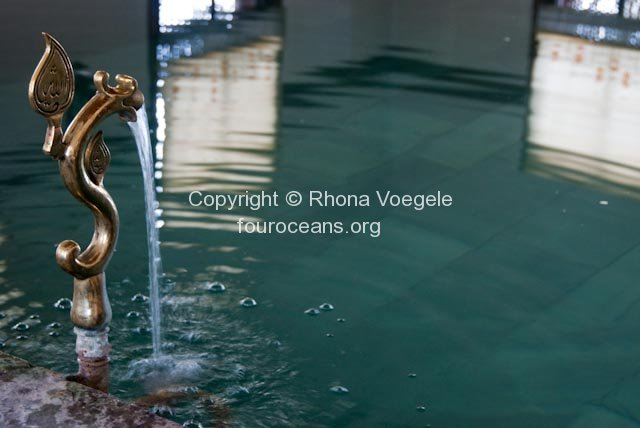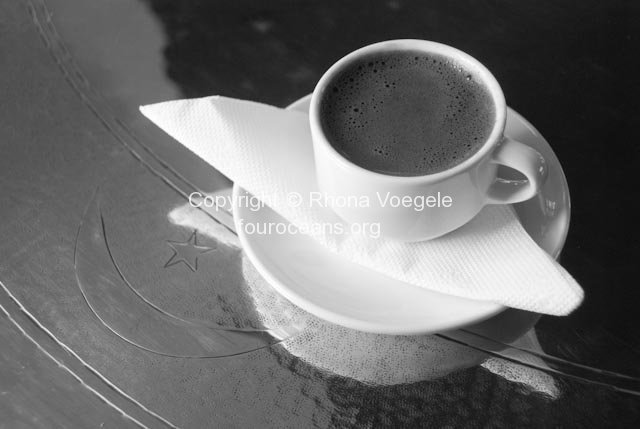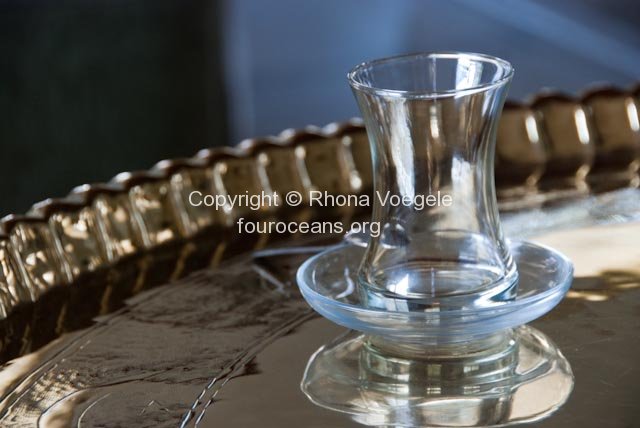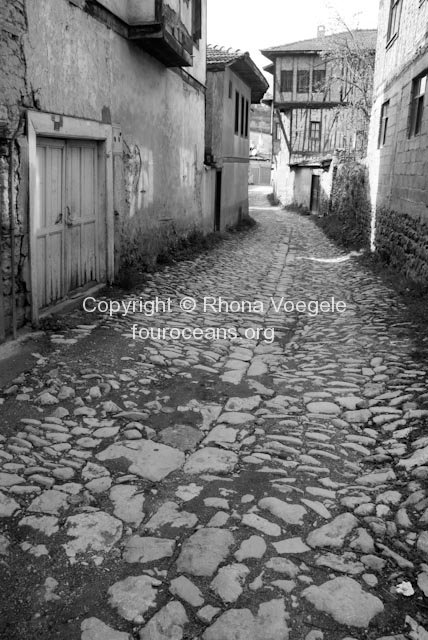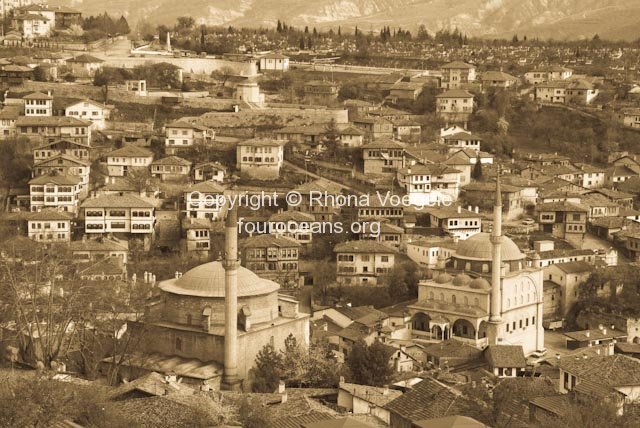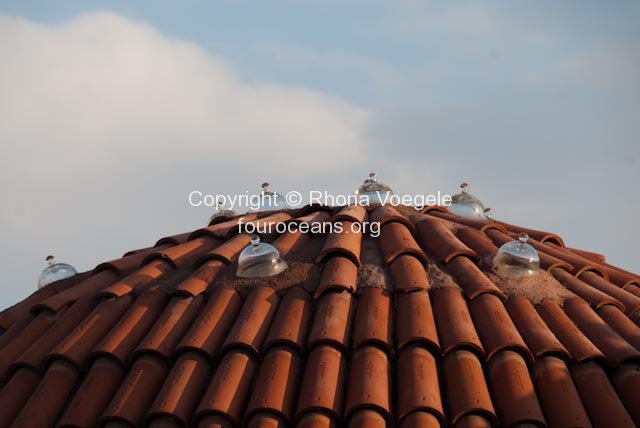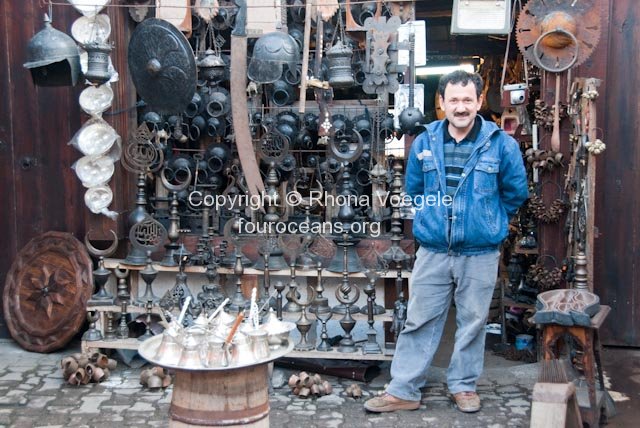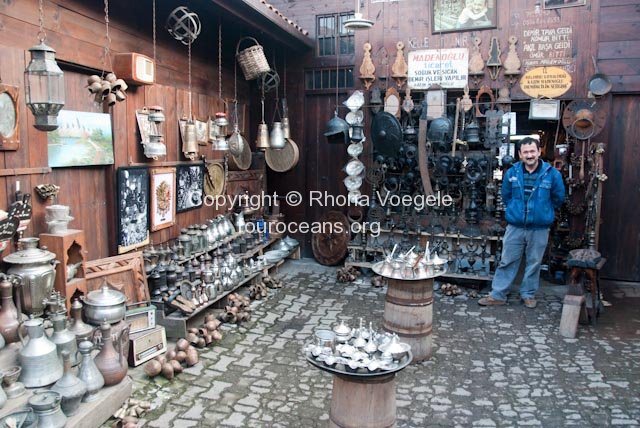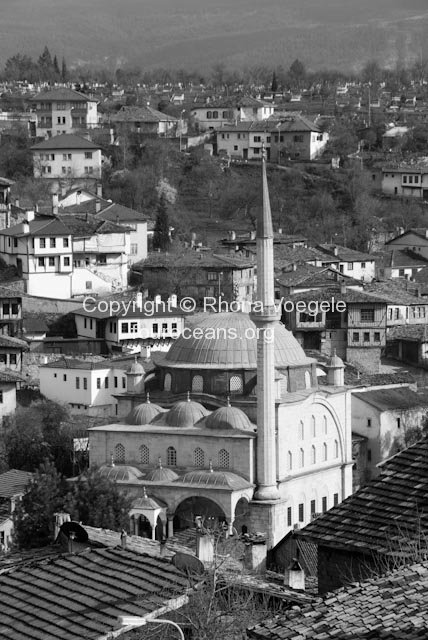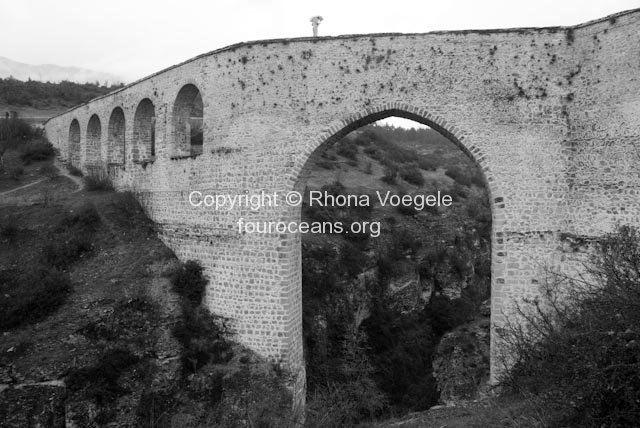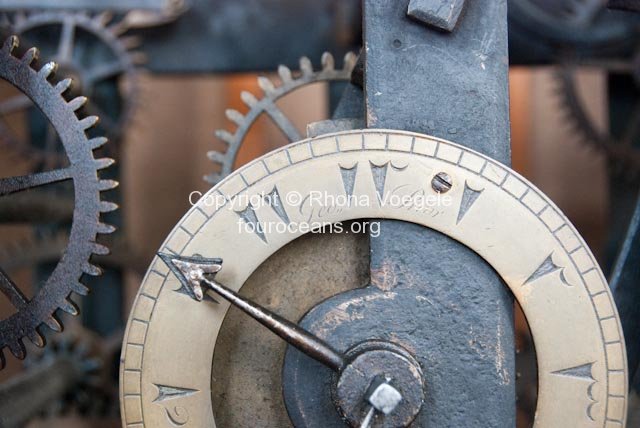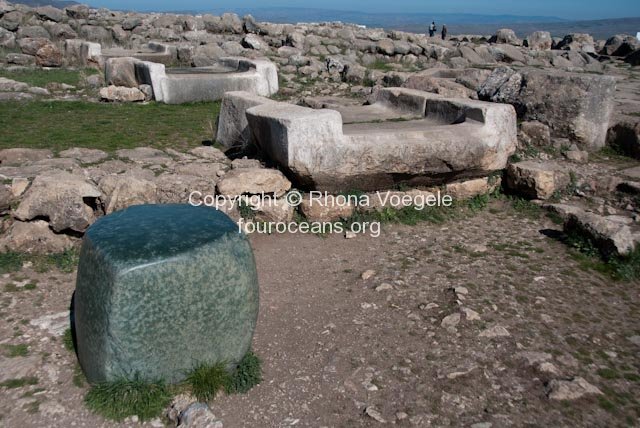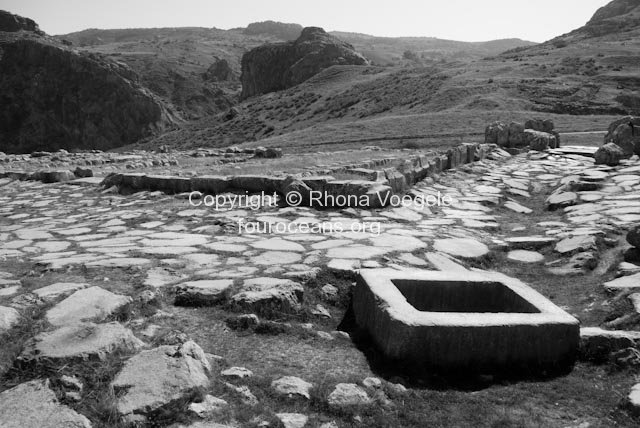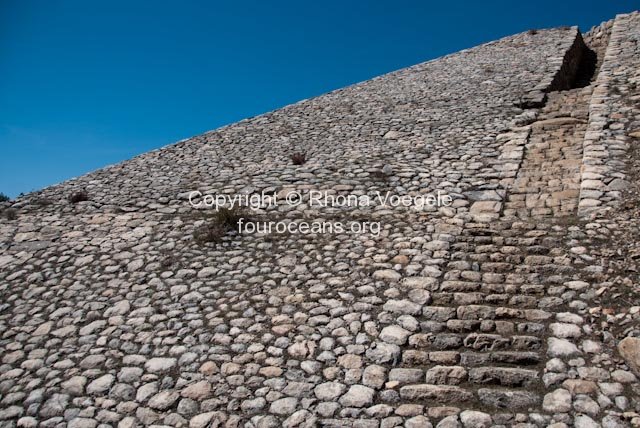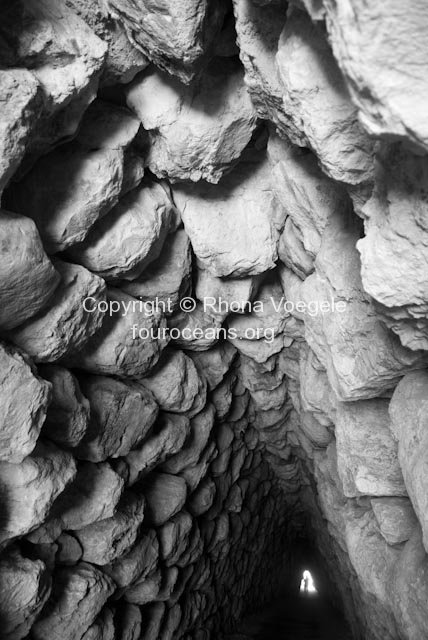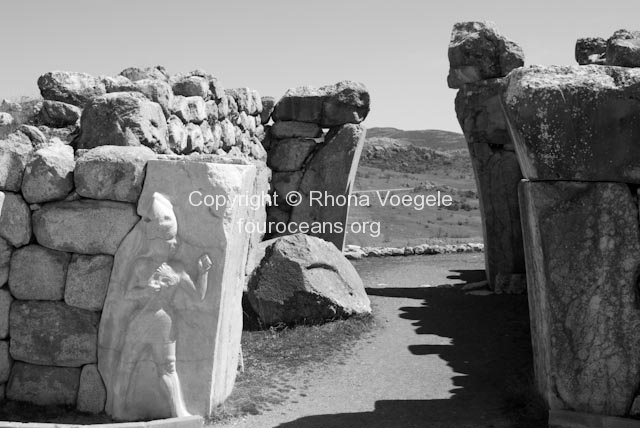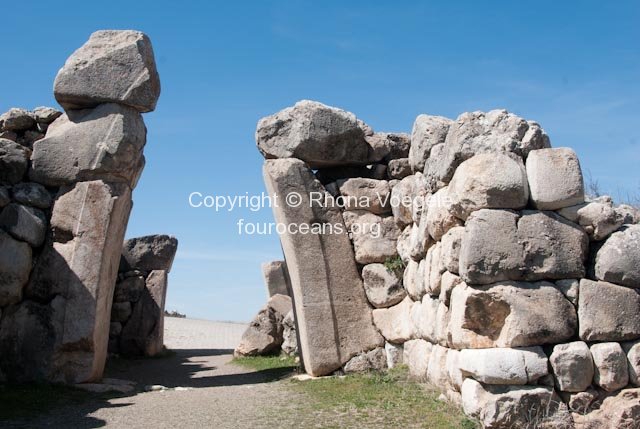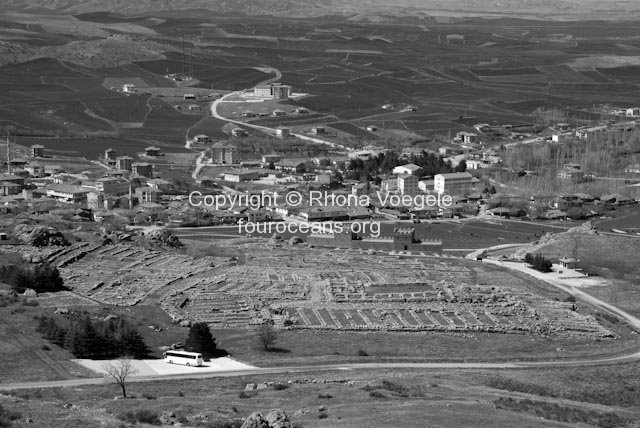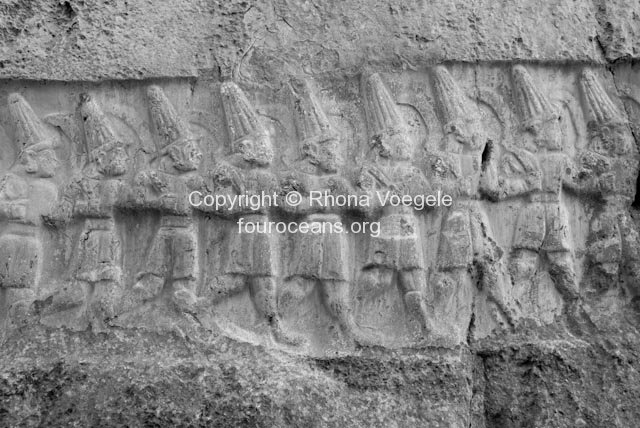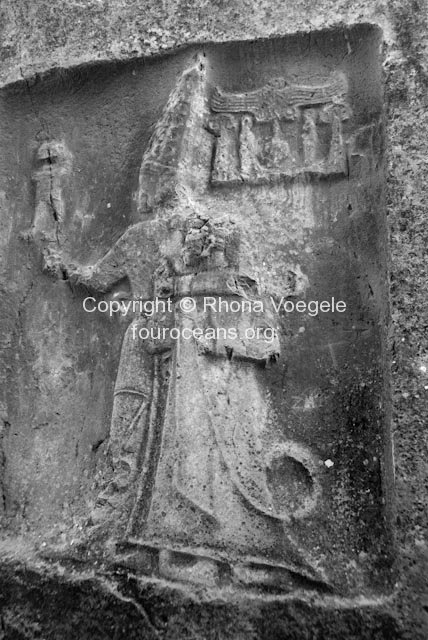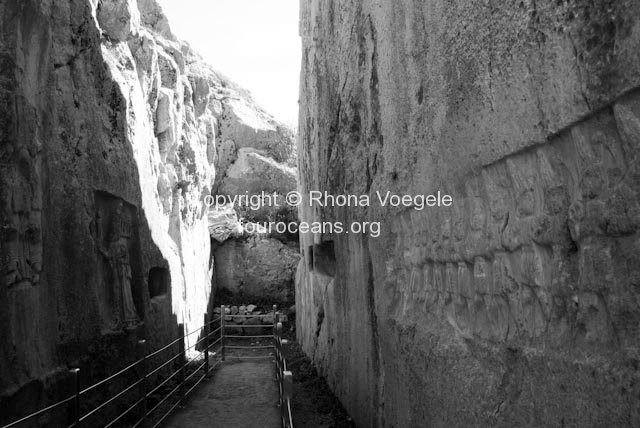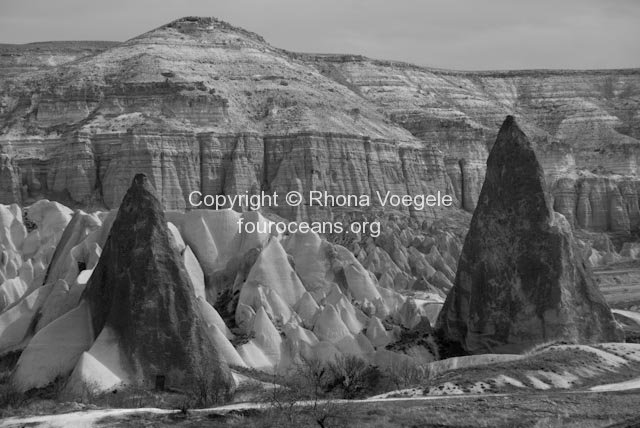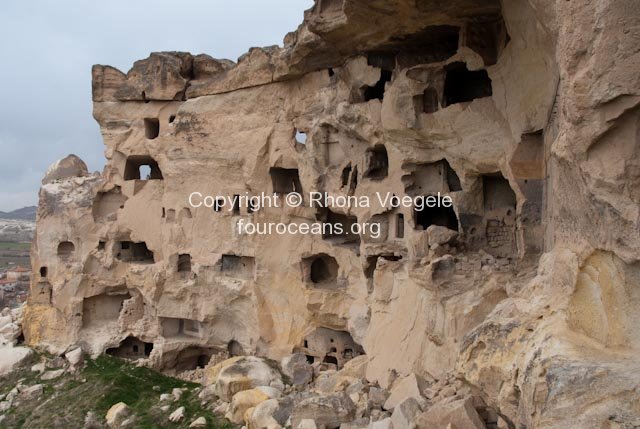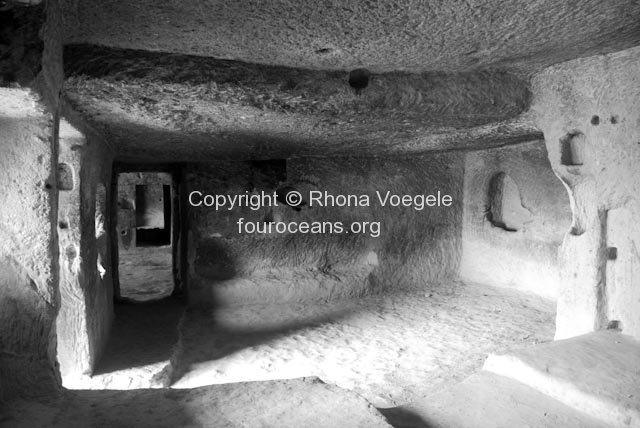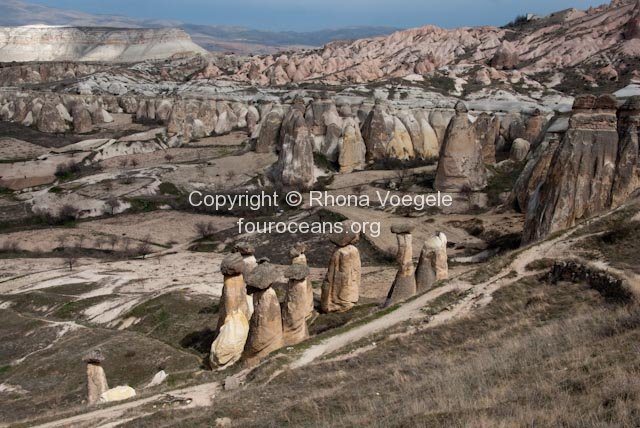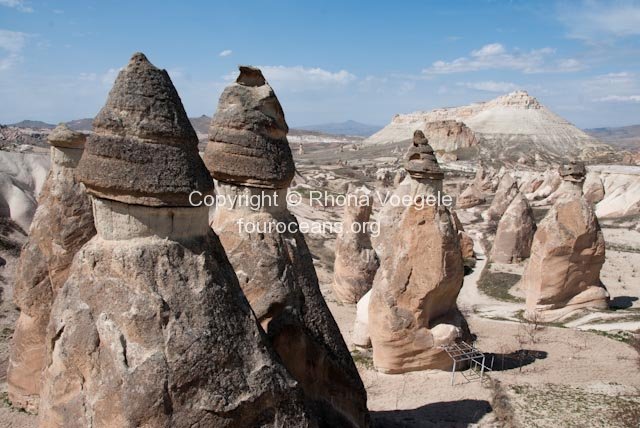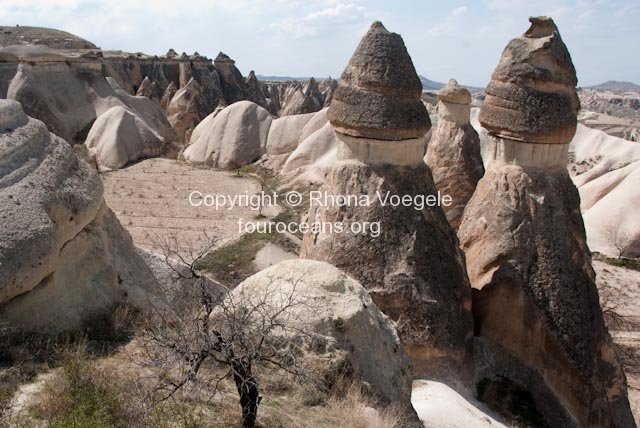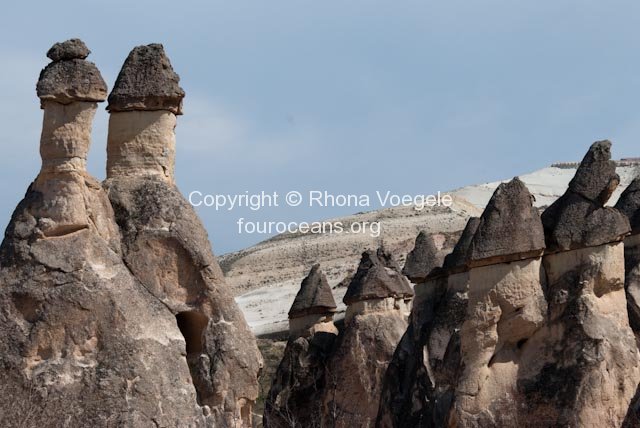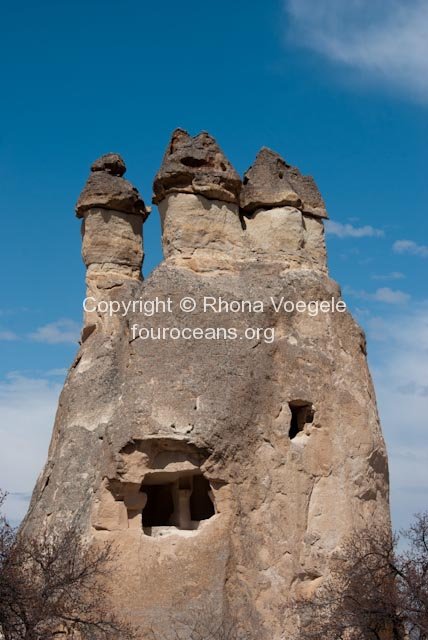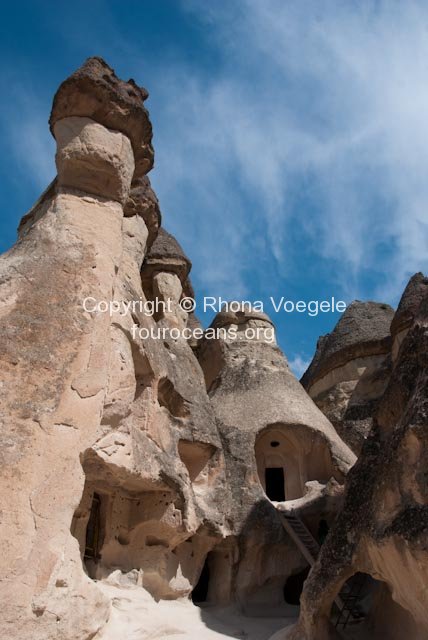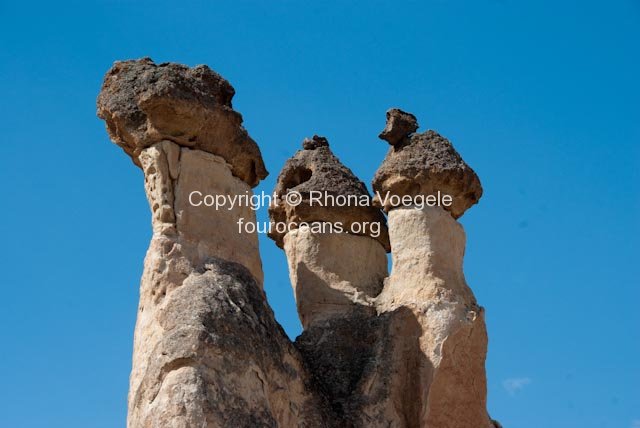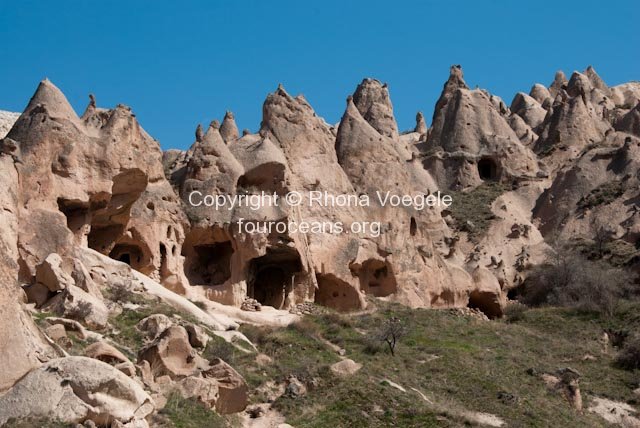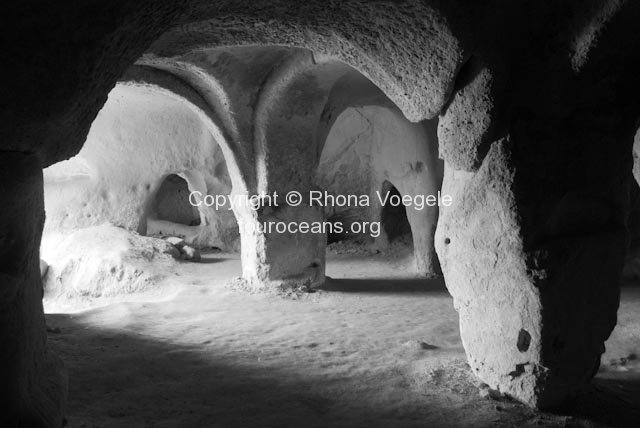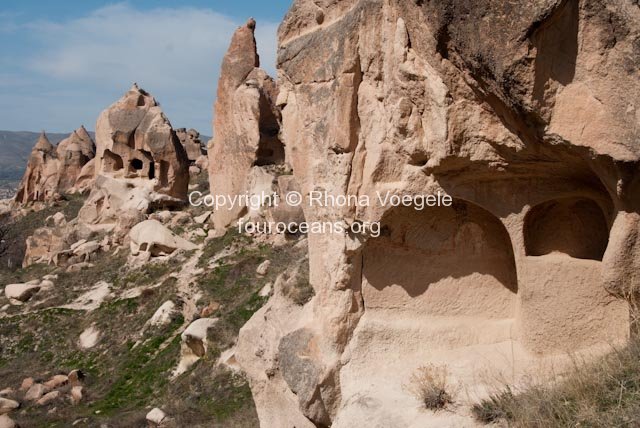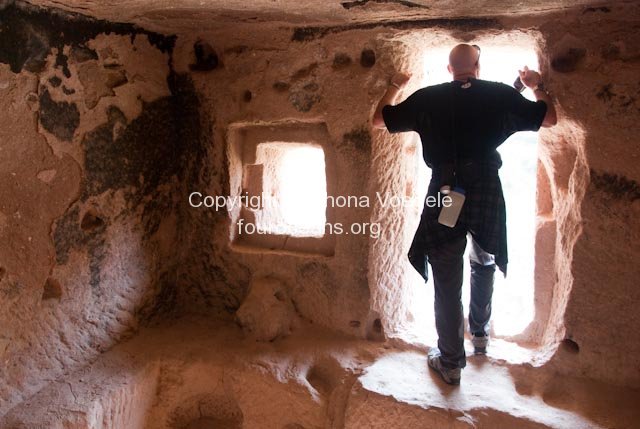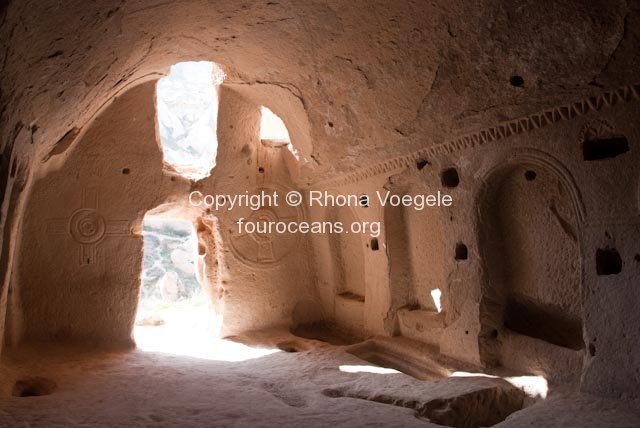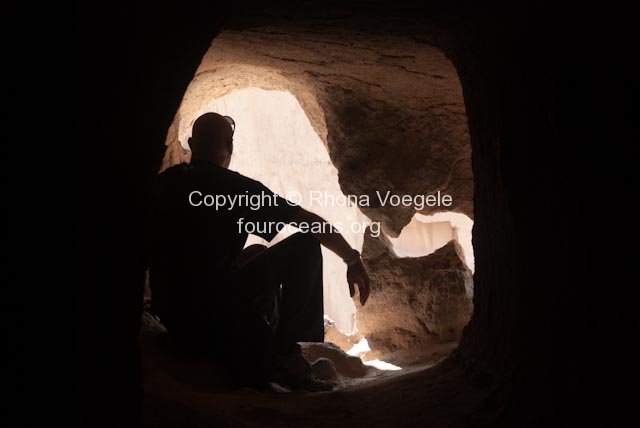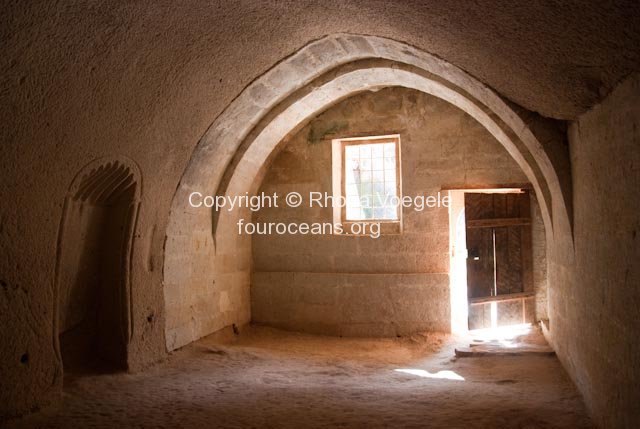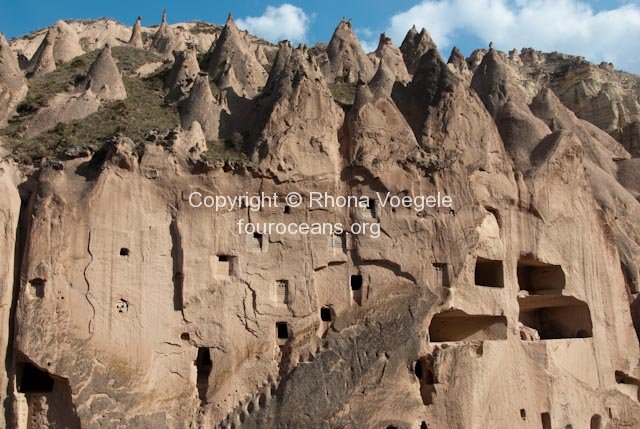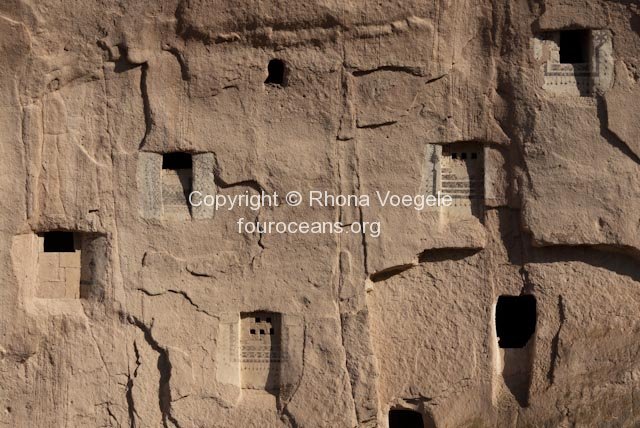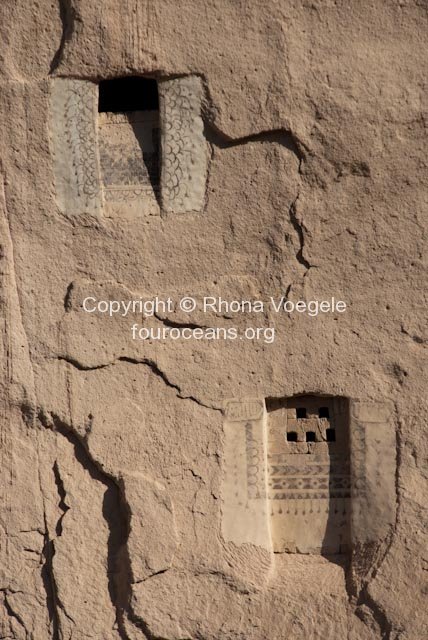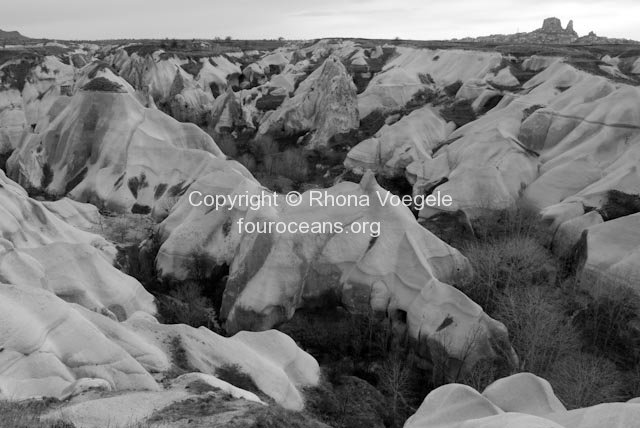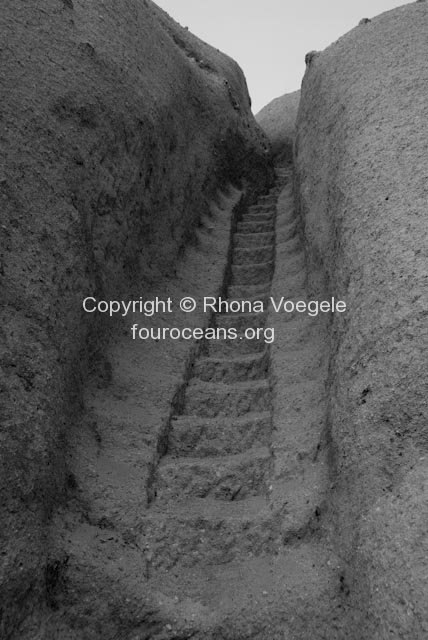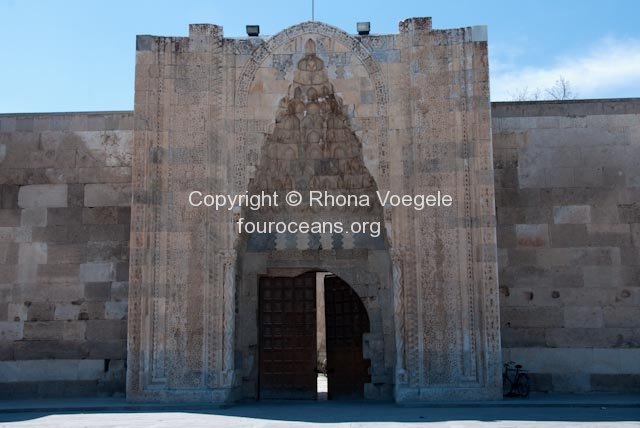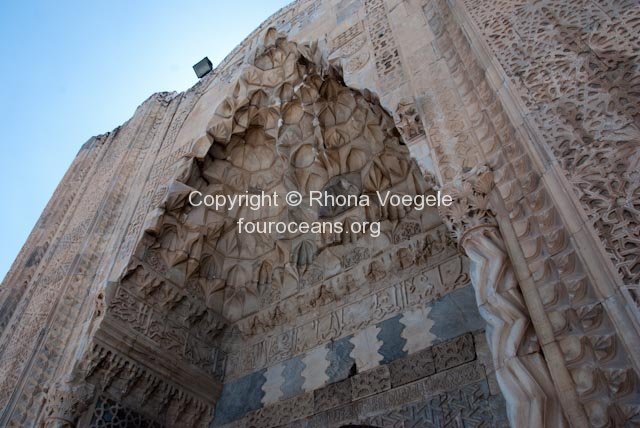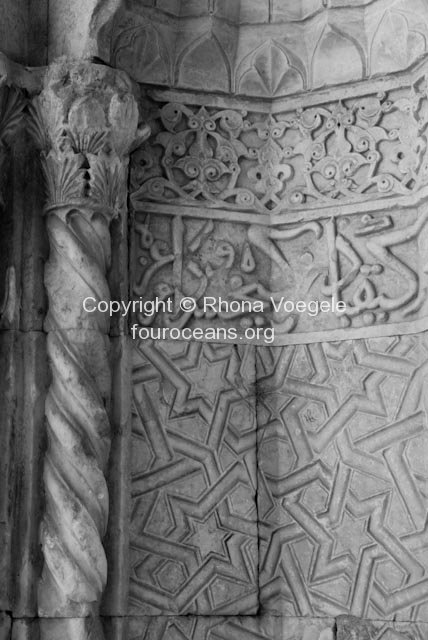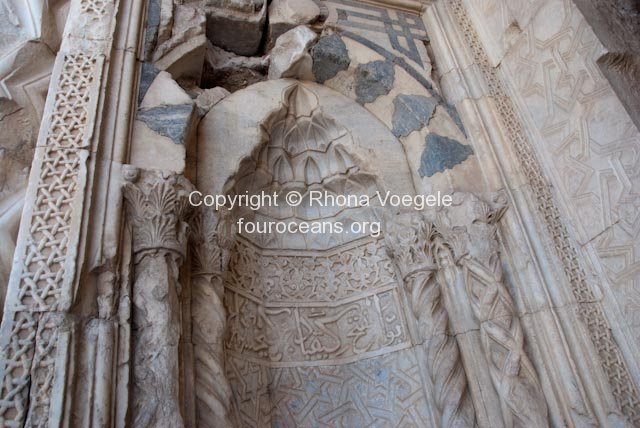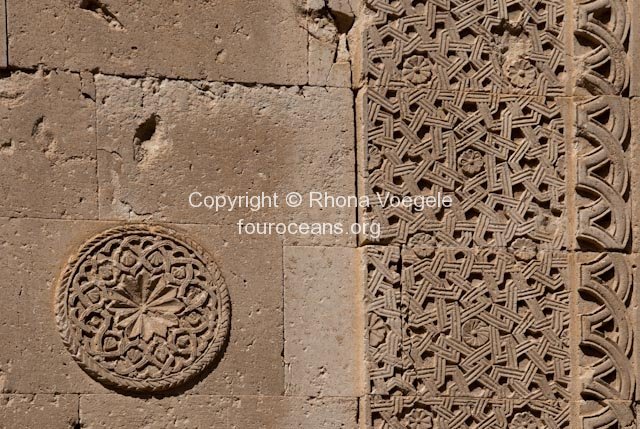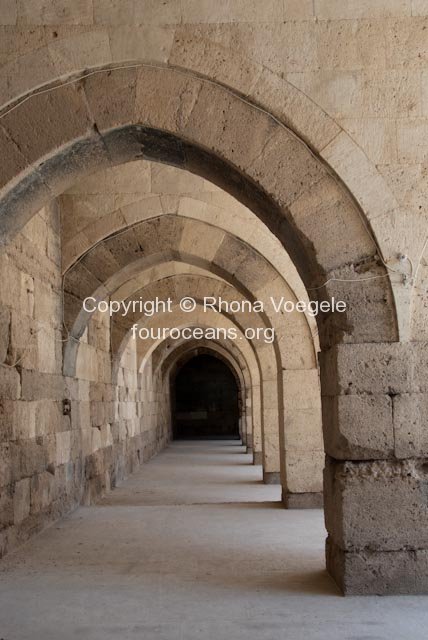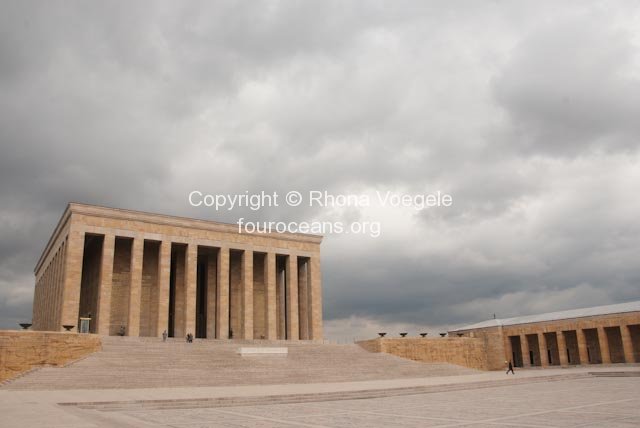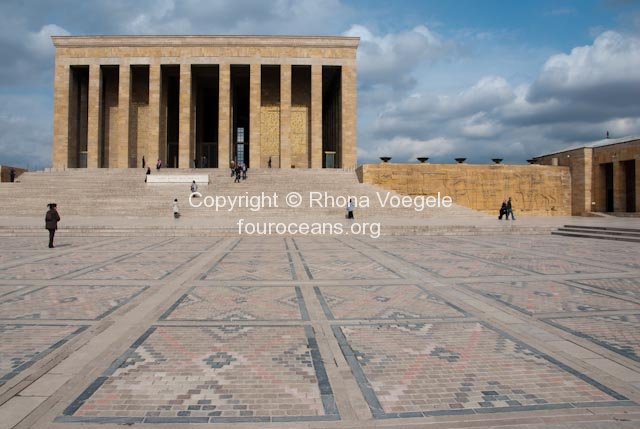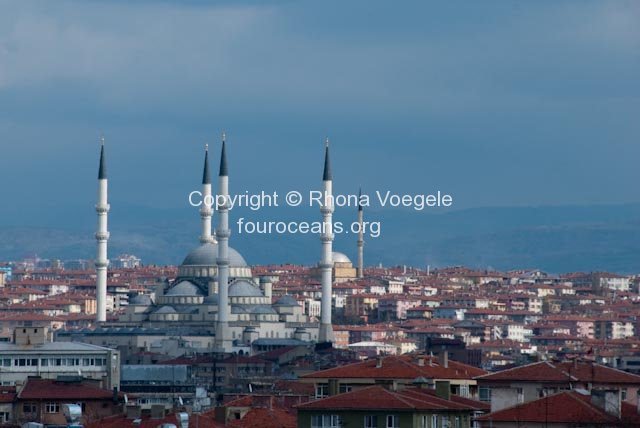–
–
The first stop on our UNESCO hopping was Safranbolu, where we wandered among the Ottoman era buildings that have been preserved in the old market area of the city. One of the things that was really nice was that the historic area is separated from the new part of town, and in its own little valley. Apart from the modern apartment blocks on the ridgeline and the occasional communications tower on a peak, all you saw were old houses, or new ones that are designed to fit in. We stayed in a beautiful building that had some of the features we saw in other buildings. The exterior is usually covered in white plaster but the interior is all wooden – the floors, ceilings and cupboards that cover the walls. Around the walls there is a narrow seating area and the rooms are designed to be multipurpose. During the day they are set up for general living and in the evening bedding is brought out of the cupboards in the wall. Another space-saving device which was a little odd was a bath in the cupboard. We’re still not really sure how this worked but essentially a small trapdoor in the raised floor of the cupboard opened and people would wash there. When they were finished the trapdoor would be closed and the cupboard would be used for storage. We’re not sure how drainage worked; we had a normal bathroom in our room.
Wandering around the streets was really cool, many of them are too narrow for car traffic and even the ones that are one car wide were pretty much only pedestrian. Many of the buildings now house shops in the bottom floor selling tourist tat, halva and Turkish delight. Everything seems to be saffron infused, as it was the growing and trading of this spice that gave the town its wealth and its name, though I can’t recommend saffron tea. We visited another caravanserai, built to give shelter to traders’ caravans and now continuing that function as a hotel. A little out of town another hotel had restored a building with a feature not often seen, an indoor pool in the reception room. It wasn’t designed for swimming, but instead cooled the room and the running water provided a pleasant background sound for socialising. I was happy enough with overhanging second floors jutting out at odd angles, all these special features made the town’s buildings even cooler! Up in the clock tower we talked to the man who has been in charge of winding up the town’s clock for the past 45 years! Since he was 22 in 1965 he has made sure the counterweights don’t hit the floor. I can’t imagine the council being able to find a replacement when he retires.
Read the rest of this entry »
Tags: Ankara, Hattusa, Hattusha, Hittite, Safranbolu, UNESCO, Yazilikaya
–
–
After a very full and exciting week last week we seem to have slowed down a little over the past seven days. Our blue sky weather in Cappadocia finally came to an end, and we’d seen a lot of fairy chimneys by the time we left. On our last full day of exploring we headed to Cavusin, a small village at the base of an impressive honeycombed rock outcrop. We clambered up and got to the Church of St John the Baptist, which dates from the 5th century and is one of the oldest churches in Cappadocia. Access is now assisted by a platform because the structure of the entire outcrop is so eroded that the original route no longer exists. It was impressive. A huge cave carved out of the rock in the shape of a traditional church, complete with columns, wall carvings and the remains of frescoes. We scrambled around the rest of the outcrop, climbing in and out of rooms, peering out of high windows and wondering if a huge cracks in the rock meant the whole thing was going to collapse in the next 5 minutes or the next 5 years.
From there we walked to an area called Pasabag, known for its mushroom-shaped fairy chimneys. The shape is a result of the more solid rock on top being eroded slower than the layers underneath. The image you see on a lot of local postcards is the three-headed fairy chimney. A single chimney splits into three at the top, with each of the small chimneys being topped by a basalt hat. It was cool, but actually some of the nicer scenery was further up the valley where the basalt tops have all but toppled off chimneys that have eroded away to narrow tips. The discs of basalt balance at odd angles, waiting to be jolted off by the next earthquake.
Read the rest of this entry »
Tags: Aksaray, Ankara, Ataturk, Cappadocia, Museum of Anatolian Civilisations, Pasabag, Sultanhani, Zelve
